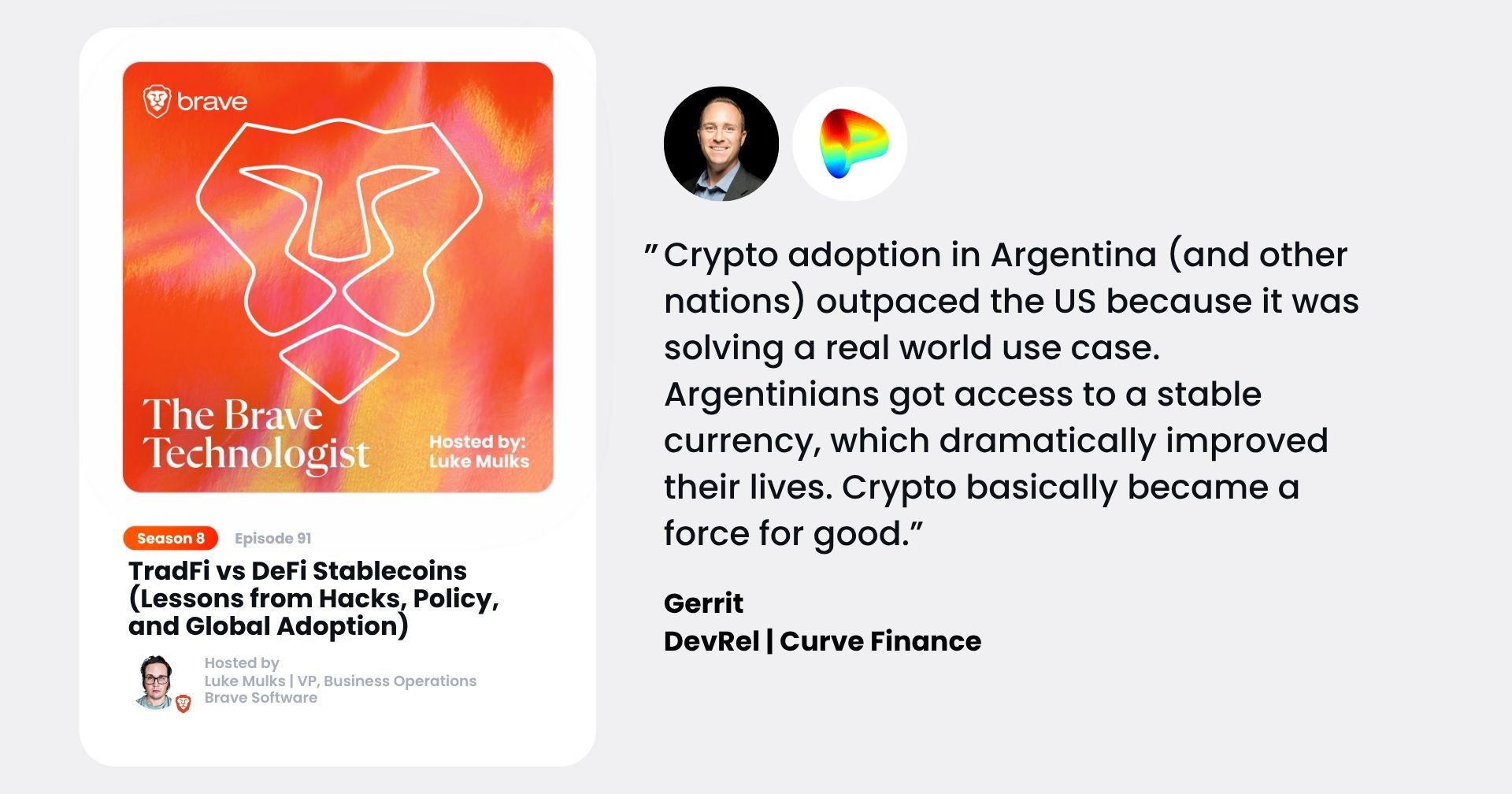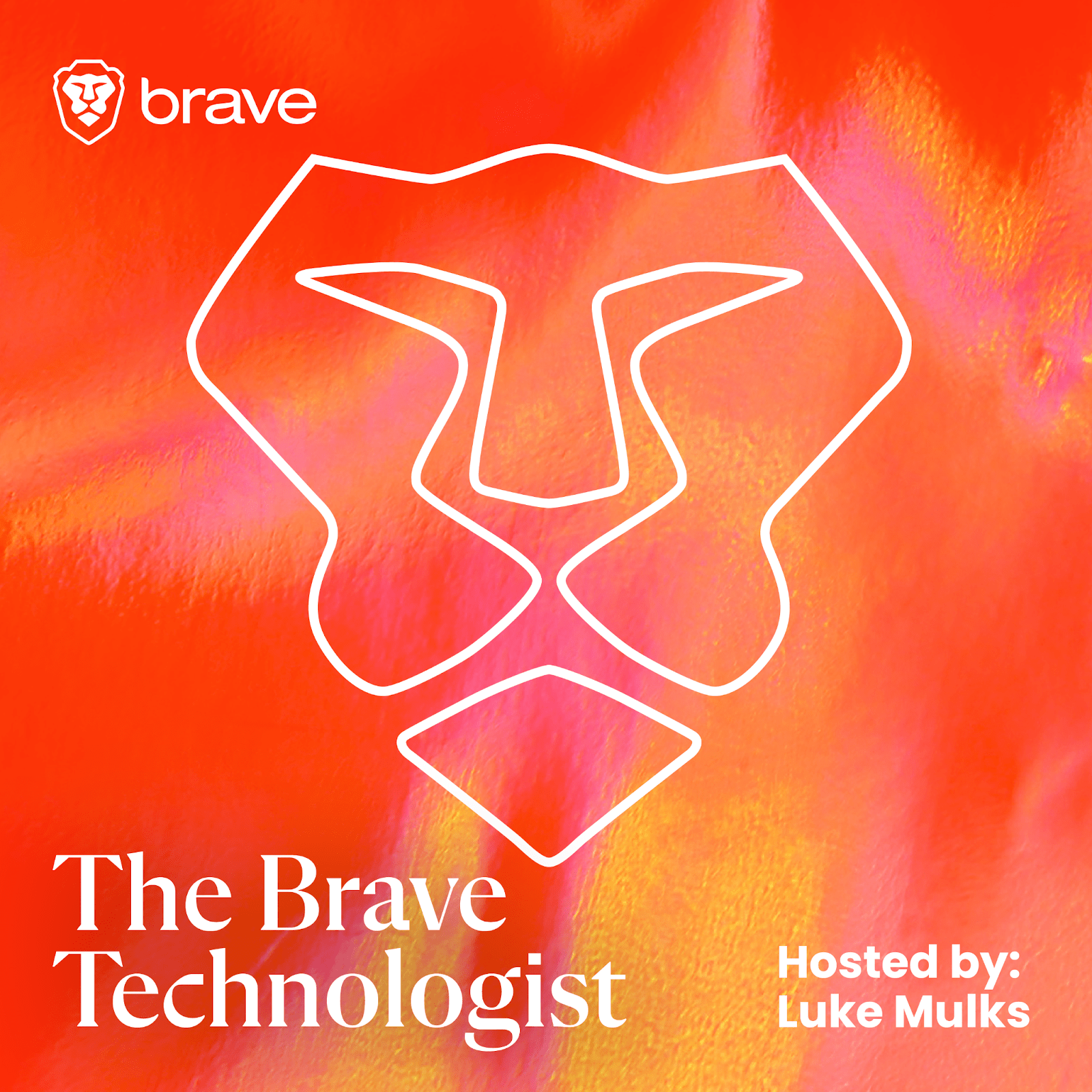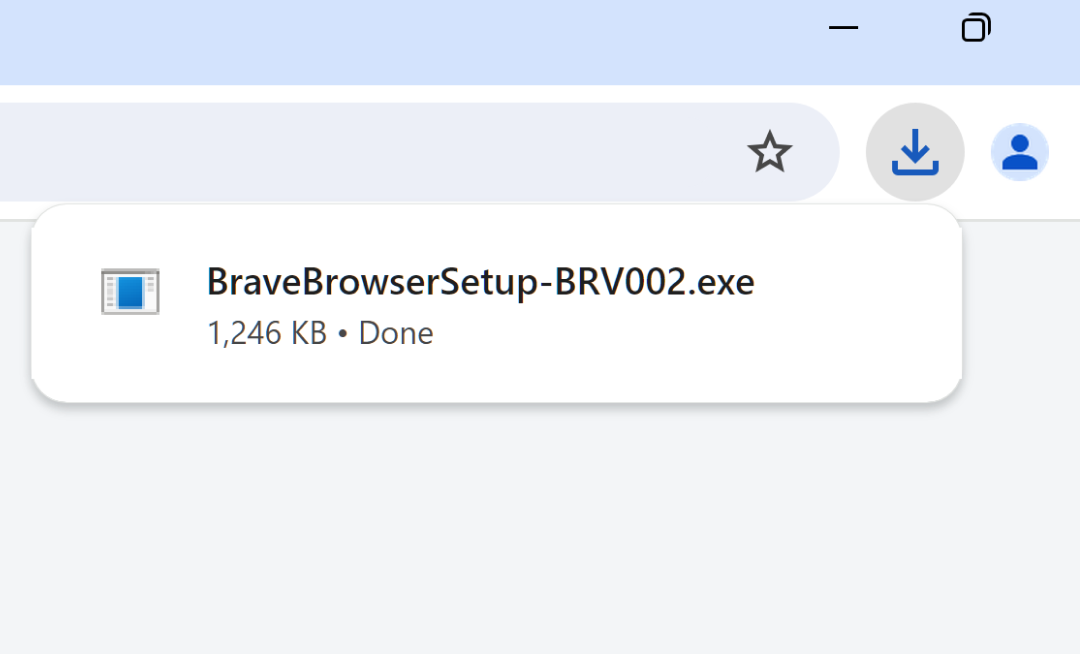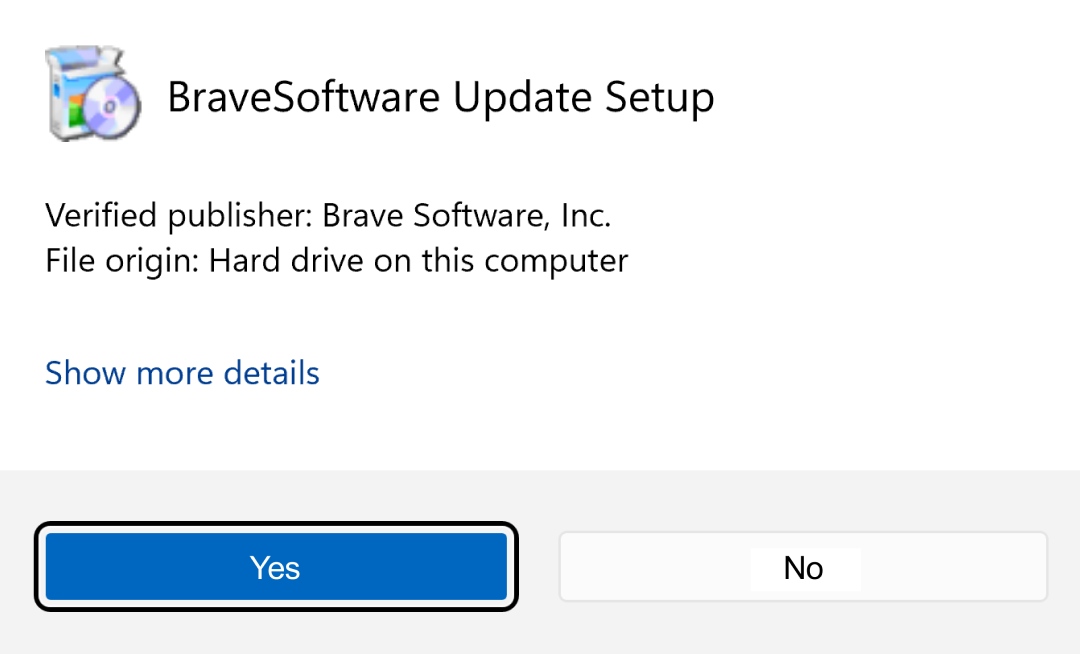LIVE from RareEvo: TradFi vs DeFi Stablecoins (Lessons from Hacks, Policy, and Global Adoption)
Luke: You’re listening to a new episode of The Brave Technologist. This one features Garrett, who’s been on chain since 2014. He joined in current finance in 2020, helping to shape the decentralized protocol, powering defi, stablecoin, and crypto markets by enabling high yield on chain savings, protected borrowing, and low slippage swaps on EVM chain.A startup founder with deep AI roots, Garrett launched the first AI powered resume grader back in 2008. He taught courses at the University of Washington on ai, blockchain, and financial technology, and holds an MBA from MIT. We recorded this episode with Garrett live at the Rare Evo Summit in Las Vegas, and in this episode we discussed the significance of the Genius Act in transforming stable coin landscape.
Luke: How regulatory clarity has spurred the growth of trad fo stable coins and why their success often ties to their integration within the defi ecosystem. The inherent risks and rewards associated with defi stable coins and the resilience of these digital assets, along with the vital role that platforms like Curve play in [00:01:00] providing liquidity and stability in the market.
Luke: And now this episode of The Brave Technologist,
Luke: Garrett, welcome to the Brave Technologist. How are you doing today?
Gerritt : Doing fantastic. Thanks for having me. Yeah,
Luke: thanks for coming. I’ve been excited to have this conversation. we’re here at Rare Evo uh, you’re doing a keynote here on why trad fi stable coins need defi stable coins.
Luke: Can you give us a kind of a preview or, dig into a little bit of that, around that core message?
Gerritt : Absolutely. So, since the passage of the Genius Act, and even before that, we’ve seen that centralized, stable coins have already been undergoing a Precambrian explosion. Uhhuh, we are seeing.
Gerritt : Billions upon billions of dollars from the traditional financial system coming on chain through trad fi stable coins. There’s also this other subset of defi stable coins, which stand to benefit from this indirectly. And what’s really interesting is that the biggest tradify stable coins, the one whether they launched 10 years ago, or whether they’re just launching now, now that there’s regulatory clarity, the ones that have seen the greatest success are those that have [00:02:00] leaned the heaviest into the defi ecosystem.
Gerritt : Mm-hmm. So it’s entirely a fantastic strategy to try bootstrapping liquid. Via Defi stable coins, partly because of actually the way that the Genius Act was written.
Luke: Okay, cool. why do you think this conversation really matters right now? In, in the evolution of stable coins in financial system?
Gerritt : So we’ve never seen an act like the Genius Act get passed. For about the past 10, 15 years, the United States has been incredibly hostile towards cryptocurrency. Mm-hmm. The only centralized, stable coins that were able to come into existence were those like tether that existed. Sort of offshore in this legal gray area.
Gerritt : But there was such insane product market fit for stable coins and such demand for US dollar denominated stable coins that tether grew to become systemically important sized. Meanwhile, the rest of the world, especially companies here in the United States, were watching Jealously Tether being the most profitable company in the world per employee, and they want to get a piece of this.
Gerritt : Now that the Genius Act has passed there is a insanely good pathway for anybody. Brave could launch a stable [00:03:00] coin and have it be backed and supported by the government if they decide to go through this Genius Act provision and launch a regulatory friendly, compliant, stable coin.
Luke: What, what do people often misunderstand in the differences between tradify and defi Stable coins, I, I’d like to kinda like have the audience get a better understanding of the differences between a trad fi and a defi stable coin. So the risk profiles are
Gerritt : vastly different.
Gerritt : Uhhuh and They of course, like all investments are risky and of course, as we’ve said, a million times nothing. And this is financial advice, right, right, right. Totally. Exactly. But that being said within defi you have much greater smart contract risk. Okay. Just to name one, there’s thousands of risks.
Gerritt : there could be rug risk, you might be a hostile person that’s just sitting there like trying to pull the rug out from someone and steal all the money. There could be collateral risk. And defi stable coins because oftentimes they’re backed by volatile currencies. Okay. So there’s a million things that can go wrong.
Gerritt : The smart contract risk is like a really big one. Mm-hmm. Because even if you have a great team and they’ve built a fantastic stable coin solution, there’s just one tiny bucket in an [00:04:00] immutably deployed smart contract. All the money can be drained. Yeah. Laundered to North Korea and just disappeared.
Gerritt : And you have no hope of getting it back.
Luke: are they collateralized differently? the defi stable coins compared to the tradify ones.
Gerritt : Yes. Usually with tradify stable coins I hand you a dollar, you take that dollar, put it in the bank and you send me a stable coin uhhuh.
Gerritt : So if there’s some how, like a smart contract bug in the stablecoin that you sent me, it doesn’t matter. ‘cause you still have the dollar. Okay. So pound for pound, like dollar back to. You know, centralized, stable coins tend to be very safe. Now they still have different risk factors. Sure, sure. there could be bank runs that can undermine the traditional financial system.
Gerritt : The US might decide to default on its debt payments and, you know, us banking system could collapse overnight. Mm-hmm. So you have all the, risks of being exposed to US banking system. Mm-hmm. You might go to a, like a. North Korean Street vendor and buy some gibo and have your, you know, currency frozen, be transacting with a foreign nation.
Gerritt : Right, right, right, right, right, right. So there’s still like risks with both forms of stable coins, but generally speaking one of the cardinal [00:05:00] rules of defi is that the risk and reward are insanely correlated. Yeah. So this means that like for example, the risk-free treasury rate is maybe like 3.5%.
Gerritt : That’s what you can get in a bank. Buying t-bills. That’s generally the cap the rewards you might see with a tradify stablecoin. Okay. Okay. With defi stable coins, because they’re often riskier, they also have higher rewards uhhuh, so you can generally see like even the kind of risk-free rate of defi stable coins.
Gerritt : The really good solid battle tested ones still sits like a maybe a little bit around that risk-free rate. Mm-hmm. But. You know, if I launch a stable coin today, people perceive it fairly as fairly risky. Mm-hmm. And you might see 20% yields on that. Oh, okay. Okay. Right. And this is actually where trad fi stable coins can strongly benefit from defi stable coins, uhhuh, because there are certain restrictions on centralized, stable coins through the Genius Act offering yields.
Gerritt : These asset issuer cannot directly issue yield uhhuh, but partners can uhhuh. So it makes perfect sense for. Tradify stable coin issuers through the Genius Act to partner with or incentivize [00:06:00] liquidity. Pools with defi stable coins. Mm-hmm. ‘cause you might be able to get access to kind of the like casino that tends to be defi.
Luke: Right. Right. And, and some of these defi stable coins might be backed by several different
Gerritt : types of digital
Luke: assets. Right. Is that fair? Exactly. Yeah. So you can have
Gerritt : a carano backed stablecoin uhhuh, you can have a solana backed stable coin. Okay, cool. You know, I’m from the Ethereum ecosystem, so we tend to see a lot of wrapped Bitcoin and Ethereum backed stable coins.
Gerritt : Uhhuh, Uhhuh. You generally want the asset to be. A blue chip asset? Uhhuh, like a meme, coin backed stablecoin is probably gonna be right. Yeah. Yeah, yeah, yeah.
Luke: It’d be, it’d be a little, a little a little crazier, but you could do it right. Yeah. And well, what to it, like what makes that defi stablecoin resilient?
Luke: Is it a matter of the selection of the assets that are backing it, or is there, are there other factors at play?
Gerritt : There’s definitely a lot of factors at play. Yeah. So you wanna look at the assets that are backing it. You wanna look at thecollateral ratio percent? So generally, like there’s 90% capital efficiency uhhuh.
Gerritt : So it might be like if you put in one Ethereum at $4,000, maybe you can only take out 3800, 30 $600 [00:07:00] worth of USD. Oh, I see. Have a little buffer built in for safety in case it goes wrong. Yeah.
Luke: Yeah, that makes sense. So you’ve been on chain since 2014. What first drew you into the world of crypto?
Gerritt : Honestly, it’s ‘cause all the smartest people in the room I found were in this uh, I was in an accelerator program. Yeah. The in Silicon Valley. Yeah. It was a Bitcoin focused accelerator at the time. Yeah. And I kind of just fudged the application and said, oh yeah, we were doing bitcoin and blockchain together.
Gerritt : I’m kidding about that. There actually was like crypto aspects to it, but I was very, very much a novice to crypto. Sure, sure. And I was kind of just, you know, I understood the buzzwords, but I didn’t understand the technology behind it. Yeah. And then I got in this room with all these other Bitcoin founders who were.
Gerritt : We’re so smart. Yeah. Like just intellectually you know, 10 to a hundred IQ points above me. Uhhuh, Uhhuh. ‘cause I’m pretty far left curve. Pretty easy. I don’t know about that, but, but they always say you wanna be in the room where people are smarter than you. Right. I was like, okay. So I like read the Satoshi White paper.
Gerritt : I like engaged intellectual debates with people about you know, it’s a very fine line between falling into cryptocurrency and [00:08:00] falling into Philosophy and economics. Oh,
Luke: totally. Yeah. And it was kind of a magical time then too, where, you know, you had and I came in in 2015 and then, and then it was like in 2016, all of a sudden you saw every kind of like predatory case from that.
Luke: It scaled with web two. Now having a. Kinda a virtuous cycle, Web3 alternative, even if it was just a rough plan or white paper or whatever. Mm-hmm. But there was something really cool about that, I think, you know, where you see how these things had scaled so rapidly from 2000 to 2015, 16 and just Nobody really thought of like the, knock on effects of a lot of that at scale. And, and so it’s just kind of a, it was a cool time to kind of be around. Yeah,
Gerritt : very much so. Yeah. And I think I wouldn’t discount economic opportunity because, right. Oh, absolutely. You know, there’s a lot of people struggling.
Gerritt : Yeah. Like I was, I had $0 at the time. Yeah, yeah, yeah. Totally. Totally. And you take a look at this Wild West and you say It actually offers like an opportunity for people to scale. And I think maybe times are even tougher for a lot of people now. I agree. I agree. But there’s still amazing opportunities in crypto.
Luke: Yeah. Yeah. How do you feel about that right now? Like what stable coins can do current for opening up financial markets for [00:09:00] people that might not be served in certain areas of the world or
Gerritt : Yeah.
Luke: Things like that.
Gerritt : Absolutely. This is one of the things that’s been like most amazing to me, watching since stable coins have had their heyday uhhuh especially over the past five years.
Gerritt : You know, inflation in a lot of countries. It makes like almost unlivable. Yeah. actually this situation has changed a bit since melee came into power. Right. But Argentina, I got a chance to visit before he came into power. Mm-hmm. When they had some of the highest inflation rates in the world.
Gerritt : Mm-hmm. And you can’t do things like negotiate a contract. you can’t, how do you, how do you like, get an apartment for a multi-year lease when the currency is going to be going up devalued? And your rent’s gonna have to increase by a significant double digit percent every single month.
Luke: Yeah. Yeah. Yeah.
Gerritt : You, how do you hire employees? E
Luke: exactly. And I think that stuff’s I mean, you hear about it occasionally, but, people in America, et cetera, aren’t really exposed to what that type of lifestyle is like and how Exactly. But, but you start to look, I mean, if you see how stablecoin adoption has kind of the types of transactions, and I mean, it’s getting adopted everywhere in different ways, right?
Luke: Mm-hmm. But like you see it where people are [00:10:00] actually using it. For everyday types of activities in, in parts of the world. It’s really cool to kind of see how it changes from place to place. Absolutely said
Gerritt : be way better than I could have. I mean, just the adoption of crypto in Argentina and I’m sure many of these other third world nations just greatly outpaced the United States because it was solving a real world use case.
Gerritt : Yeah. They got access to a stable currency. Their lives were able to improve dramatically. And you know, it’s basically like US dollar, becoming a force for good in a lot of people’s lives. Yeah. Yeah.
Luke: Awesome.
Gerritt : Well, let’s, switching gears a little bit.
Luke: Curve has kind of become a cornerstone of the defi stablecoin infrastructure.
Luke: How do you describe its role in the ecosystem?
Gerritt : So the tagline that we’ve been working with is All roads lead to curve. And it works very well because I’ve noticed that tradify as well as defi stable coins almost inevitably end up on curve because you get. Some of the best access to liquidity throughout the ecosystem.
Gerritt : Mm-hmm. And then more recently, the ability to have access to the curve USD and the permissionless lama lend lending markets. Mm-hmm. Means [00:11:00] that inevitably every stable coin needs to have a solid curve strategy if it’s going to succeed.
Luke: curve’s been around for a while, but can you give the audience, some people might not knowwhat, what does curve do?
Luke: Like how does it, how does it function?
Gerritt : Right. So about five years ago when Amms were first allowing for permissionless trading particularly of volatile crypto assets mm-hmm. Curve founder Michael OV, had this brilliant idea. It actually came from a use case that he needed. Mm-hmm. He needed to be able to exchange large amounts of dollar coins for other dollar coins.
Gerritt : Mm-hmm. And the problem is all the algorithms were tailored for trading crypto. Mm-hmm. So you actually expect prices to move very fast. You don’t expect stable coins price to move at all. Right. If you’re doing it right. Right. Hopefully. So if you wanted to trade like a hundred dollars for a hundred dollars, you know, you get $99 out, it’s close enough.
Gerritt : Right, right, right. If you’re trying to trade a million dollars and you’re only getting $900,000 out, like that’s a significant price movement. Yeah. So that’s referred to as slippage. It was impossible to trade large volumes of stable coins without getting wrecked by slippage. Yeah. Yeah. Yeah. So he devised an algorithm, which essentially holds that [00:12:00] one-to-one price for as long as possible, and then at the tail end it will start to deeg.
Gerritt : Oh, okay. And as a, that formula works very well. It’s the intellectual property of the parent company, Uhhuh. So Curve essentially has like a license for the best stablecoin trading algorithm out there. Nice. Nice. And as a result, like it, because it’s such a fantastic home for stablecoin trading, you’ll often see this where stable coins will put up liquidity on a bunch of different amms.
Gerritt : Yeah. And then a crisis time will hit and only curves. A MM is gonna be capable of actually handling. The severe like egs that have happened for many stable coins throughout history. Yeah. And thankfully a lot of recoveries as well.
Luke: Yeah. Yeah. That’s awesome. So I know we talked about the Genius Act and, and how that’s gonna change things, but looking ahead too, like what role do you hope that curve and, and defi more broadly will play in reshaping global finance?
Gerritt : It’s a great question. So I think that we’re actually seeing the entire global financial system getting rebuilt in real time. Oh, cool. And we’re very lucky to be part of it, right? Yeah, yeah, totally. You
Luke: know, it’s exciting.
Gerritt : Very exciting. Now I think that we’ve [00:13:00] seen, for example, some of the problems that the traditional finance system has.
Gerritt : With, you know, they’re closed on weekends for starters, which is crazy. It is different. I was, especially
Luke: the longer you spend in crypto and then you’re, you, you go back to having to do something in the, the traffic system, you’re like, wait a minute. What? I know. I was like,
Gerritt : I think, you know, like,my Charles Schwab account’s broken, I kicked, oh, it’s the after hours.
Gerritt : I forgot. Yeah,
Luke: exactly. what is this waiting I have to do?
Gerritt : But there’s significant problems with international cross border settlement. Companies eat the cost on all these things, so it’s just inevitable that they’re all going to migrate to the better technology that is on chain.
Gerritt : Mm-hmm. Now for Curve, it’s a fantastic time because we’re going to see, as I thousands, maybe millions of stable coins getting launched and coming on chain because it’s a fantastic business and the Genius Act actually provides like a fantastic structure. To allow people to launch stable coins and have like very strong government protections if they launch them through this genius act compliant way.
Gerritt : Mm-hmm. At the same time, decentralized, stable coins are going to benefit because they are, you know, we mentioned that they’re [00:14:00] tradify stable coins do much better when paired and giving users access to kind of all the amazing innovations being built out in Defi. Yeah. So we’re going to see. Thousands, maybe millions of stable coins coming on chain.
Gerritt : Bringing significant amounts of liquidity to cryptocurrency mm-hmm. And enabling it to become the new financial rails.
Luke: Awesome. Awesome. Yeah. Well, you’ve also worked in AI since 2008. Absolutely. do you see meaningful crossover between AI and crypto? in the present or future?
Gerritt : Yeah. I do believe that we’re in the early years of the AI era. Yeah, yeah, yeah, yeah. It’s. Already changed, like my life Probably changed your life significantly. Yeah, sure. And we’re still in like the earliest innings. Yeah. So I don’t think it’s a stretch to predict that AI is going to change.
Gerritt : Everything about how we interact with the world in the, over the course of the next several decades. Mm-hmm. Mm-hmm. And I also don’t think that we’re very good at predicting what that’s gonna look like. Right. Right. ‘cause at least so far, like all the AI experts, did any of them call the hallucination problem?
Gerritt : No. No.
Luke: and it’s just so much noise and hype too to where like,not a [00:15:00] ton of actual market fit with some of these things yet and mm-hmm. And I think, you know, a lot of that just comes through, people using it more and, and kinda getting, establishing what they want, what they need, whether it’s helpful.
Luke: Exactly.
Gerritt : Now I’m in the camp that uses AI every day. Yeah. I, I mean I could live without it, but, ‘cause I have before, but could be difficult to imagine going back to the pre IA era. Right, right. It does have some like fantastic applications. I don’t yet see them as being like, I wouldn’t trust any of my money.
Gerritt : Right. To an AI agent at this point. Yeah. Yeah. Partly ‘cause of that hallucination problem, right? Yeah. AI agents turned out to be like strongly probabilistic in their construction, right? Yeah. You layer like several layers of neurons, each of which have a probability of firing. It’s, it turns out it’s not surprising that they can issue just like wildly chaotic results.
Gerritt : Yeah. Yeah. That’s not good necessarily for money. Yeah. Now it could be though. Because you could have a genetic algorithm that says, let’s seed like different AI agents with a bunch of different strategies. Right. And evolve the one that wins the fastest and maybe like it might actually work.
Gerritt : Yeah. Yeah. But that being said, I am [00:16:00] certain thatThe way that you can handicap it is that because of this kind of phenomenon where AI is like able to kind of like imagine all the crazy super position of possibilities that AI is digital abundance and crypto is digital scarcity. Yeah.
Gerritt : So it’s almost certain that the two of them are going to find like amazing overlaps as the decades play out.
Luke: what excites or concerns you about how AI and crypto might intersect in the coming years? I know you mentioned hallucinations, right? is there, are there anything else that comes to mind?
Gerritt : Well, I don’t think the hallucinations is necessarily a problem. Okay, good. You just have to figure out how to like, use it within crypto Uhhuh. And I think that there is like strong advantages to how it can already be used within the crypto space. Yeah. already at the moment, blockchains generate more data than humans can interpret.
Gerritt : Right, right. Right. AI are actually very good at interpreting that data. Mm-hmm. Of course you need to kind of then feed it back into other algorithms to say, alright, did the AI actually interpret this correctly? Or to just imagine that there’s a arbitrage opportunity here. Sure. But it might become very good at like,and already is actually very good at finding potential solutions for complex [00:17:00] like MEV problems.
Gerritt : For example, Uhhuh. So it already has some applications or like searching governance forums because there’s a ton of like crazy information that they. Thousands of like, and itstacks over years.
Luke: Right. Exactly.
Gerritt : And it can be very tough to understand what’s going on. So it’s already got some applications.
Gerritt : The only thing that concerns me is that, and this is not necessarily a problem with ai, just a problem with crypto in general. Yeah. Is I get so sad when I see hacks or people just losing money Yeah. Because they got too greedy. Yeah. And I think that AI is gonna give people like a toolkit to get themselves hurt.
Luke: Yeah, yeah, yeah. or people giving too many liberties to,AI tools or functionality when it, when it comes to moneyand not enough safeguards or something. Exactly.
Gerritt : They won’t understand it. Yeah. So they’re gonna find ways to like gamble on a meme coin they shouldn’t have. Or they’re gonna get phished and lose their private keys.
Gerritt : Yeah. Yeah. Or it could be a tool for hackers, honestly, to say you know, here’s a set of smart contracts like. See if you can find an exploit. Yeah, yeah, yeah. Like five of the, it’ll come back with 10 results, five will be hallucinations, five will be real, and people will get their money drained faster.
Gerritt : So, yeah. Yeah. So all the problems with crypto [00:18:00] will get exacerbated. Yeah. And that is gonna be painful because just watching the hacks like hurts on this emotional and visceral level. It does, it does. Um, But then I think it’ll also enhance all the amazing things about cryptocurrency as well. In the same way that like the hacks and the problems will get enhanced.
Gerritt : I think we’re gonna see like a proliferation of new innovations that would not have been possible without ai.
Luke: Absolutely. Absolutely.
Gerritt : Overall bullish.
Luke: Yeah, totally. I mean, we covered a lot too, and I really appreciate you coming on sharing with us on and with the audience on this. Is there anything we didn’t cover that you think our audience might want to hear about?
Gerritt : I’m sure days worth of stuff. Right. Any one thing that
Luke: came to mind? No. If not, no worries. No, no. I really Garrett, really appreciate you, you coming on sharing this with our audience. It’s super informative conversation. I love to have you back too, just as things progress and check back in on this.
Luke: Anytime you know where to find me, I’m in my brave browser all day. All right. Appreciate it man. Thanks for coming on. My pleasure.
Appreciate
Luke: Thanks for listening to the Brave Technologist Podcast.
Luke: To never miss an episode, make sure you hit follow in your podcast app. If you haven’t already made the switch to the Brave Browser, you can [00:19:00] download it for free today@brave.com and start using Brave Search, which enables you to search the web privately. Brave also shields you from the ads trackers and other creepy stuff following you across the web.








